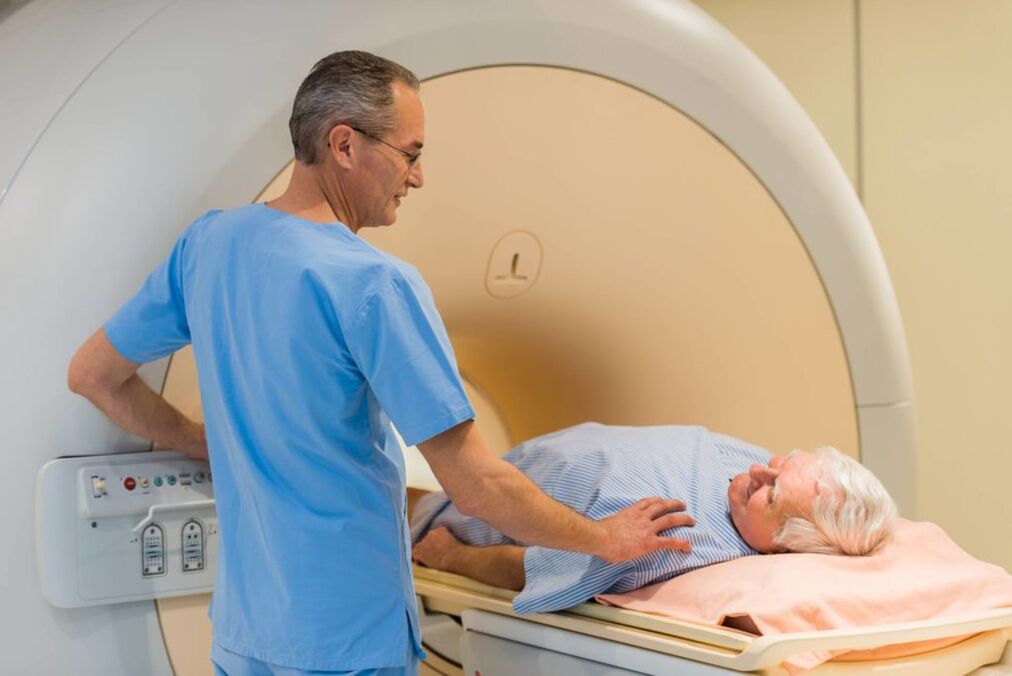Calcular prostatitis is a complication of a chronic inflammatory process in the prostate. In this disease, tartar is formed in the excretory ducts of the prostate and acini. As a result of the development of the pathological process, the patient's urge to urinate becomes more frequent, pain appears in the perineum and lower abdomen, and an erection is impaired. You shouldn't go through this disease process as it can ultimately lead to a number of health problems.
What is Calcular Prostatitis?

This disease is a form of chronic prostatitis. The disease is characterized by the formation of prostatolites or stones, which are one of the most common consequences of a protracted inflammatory process in the prostate.
Stones in the prostate are most often discovered during a routine examination in around 9% of men of various ages.
There are three age peaks in the incidence of this form of prostatitis:
- 30-39 years old. Usually the disease is not recognized in patients under 30 years of age. However, the disease is gradually getting younger. In people of this age group, the development of calculous prostatitis is associated with a long course of chronic prostatitis caused by gonorrhea, chlamydia, ureaplasmosis, or mycoplasmosis.
- 40-59 years old. The most common cause of the disease in men of this age group is prostate adenoma.
- Over 60 years old. In this case, calculous prostatitis most often develops against the background of the extinction of sexual function.
Causes and Risk Factors
The formation of stones in the prostate can have two causes:
- True or primary, which are characterized by the direct development of the disease in the gland ducts or acini.
- Secondary or false, in which there is migration of stones from the upper urinary tract. Most often, the place of their formation is the bladder, kidneys or urethra. The reason for the development of calculous prostatitis can be urolithiasis.
Depending on the nature of the onset of the disease, the reasons for its development are divided into two groups:
- Exogenous. In this case, we are talking about such factors that are not related to the work of the body, but act on it from the outside. These include drug addiction, smoking, or alcohol abuse.
- Endogenous. Concrements appear against the background of any functional disorders of the body. We are talking about organ injuries or complications after an operation. Bacterial damage to the prostate is also related to these factors.

Alcohol abuse can trigger the development of calculous prostatitis in men.
Calcular prostatitis usually develops against a background of stagnant, inflammatory changes in the prostate. Such processes arise due to insufficient emptying of the prostate, so the main causes of the disease are the following factors:
- Lack of regular sex life;
- the predominance of a sedentary lifestyle;
- Replacing sex with masturbation;
- bad habits like alcoholism or smoking;
- inflammatory processes of the prostate, which are caused by the penetration of microbes into the organ.
Experts distinguish two main pathological mechanisms that lead to the formation of stones in the organ and its ducts:
- Violation of the secretory function, as a result of which there is a significant stagnation of secretion of the prostate.
- Throw urine into the cavity of the prostate. This can occur against the background of a malfunction of the genitourinary system, the formation of fistulas and the influence of a number of other negative factors.
Symptoms
The signs of calculous prostatitis are in many ways similar to the development of chronic inflammation of the prostate, but they are more pronounced. Most patients diagnosed with this form of prostatitis complain of difficulty and pain when urinating.
The difference to chronic prostatitis in this case is that the patient experiences pain around the clock and not just at night. The reason for such a clinical picture is usually the disturbed flow of urine and prostate secretions. This is due to the complete or partial clogging of the canal with a stone.
A number of other symptoms of the disease should also be highlighted:
- The presence of pain in the pelvis and perineum. In addition, they cannot manifest themselves only during urination. Patients experience unpleasant sensations in the coccyx and lower abdomen, which do not depend on the time of day.
- Pathological impurities appear in the semen. Often there is bloody discharge and only in extreme cases may pus be present.
- Pain when urinating against the background of frequent false desires. Very little urine is excreted in most patients. However, it can also be absent entirely.
- Erectile dysfunction. Due to the fact that the duct of the prostate gland is blocked, the normal outflow of semen from the organ is disrupted. All of this leads to the inability to complete sexual intercourse.
In the most severe cases of the development of the disease, the patient may completely lack an erection and significantly reduce libido.
diagnosis

Magnetic resonance imaging provides good results for the precise identification of the disease.
Before treating calculous prostatitis, it is necessary to carefully examine the patient. The urologist is engaged in diagnosing this disease. He is obliged to make a preliminary diagnosis and the subsequent physical and instrumental examination based on the patient's complaints. It includes the following procedures:
- Digital rectal exam of the prostate. It is done by palpation. In the presence of calculous prostatitis, the patient has a kind of crepitation and a bumpy stone surface.
- Transrectal ultrasound of the prostate. This procedure identifies stones that have the appearance of echo-rich structures with a clearly visible acoustic path. The number of such formations, their size, location and structure are studied.
- Survey urography. The procedure allows you to identify the presence of prostalitis.
- MRI and CT scan of the prostate. These techniques are highly effective and are used to confirm the results of previous studies.
As additional procedures are used: urethrography, pyelography and cystography.
In addition to instrumental techniques, the diagnosis of calculous prostatitis includes laboratory tests, which include the following procedures:
- Examination of the secretion of the prostate.
- Analysis of the bacteriological culture of urine and material from the urethra.
- PCR study that uses scraping to check for the presence of genital infections.
- Blood tests. Most often, a biochemical analysis is done.
- Analysis of urine.
- Semen analysis for biochemistry.
- Bacteriological sowing of ejaculate.
When it comes to conducting differential diagnostics, its task is to distinguish calculous prostatitis from tuberculosis, prostate adenoma, prostate oncology, as well as different types of prostatitis.
treatment
How to cure calculous prostatitisTherapy of calculous prostatitis is prescribed by a doctor on the basis of a thorough diagnosis. Depending on the degree of development of the disease, several treatment options are possible. Let's take a closer look at each of them.
Drug therapy
The course of treatment is prescribed by the doctor strictly individually.
Treatment of chronic calculous prostatitis with tablets can last from one to three months. This type of therapy is primarily aimed at achieving stable remission and avoiding complications of the disease.
Regardless of the cause of the disease, antibacterial drugs are prescribed to the patient. Antibiotics are prescribed based on the results of the analysis of urethral secretion and urine culture.
The most common means of treating calculous prostatitis are:
- Fluoroquinolones. This is the most effective group of antibiotics used to treat calculous prostatitis. However, these funds can only be used once the presence of tuberculosis has been completely ruled out.
- Tetracyclines. They are used less often because they often cause the occurrence of side effects.
- Penicillins. Classic antibiotics that have a broad spectrum of activity on pathogenic microflora.
- Cephalosporins.
physical therapy
To increase the effect of drug therapy and improve the functioning of the prostate, the following physiotherapeutic techniques are used:
- Magnetic Therapy. It is used to get rid of edema and normalize blood circulation.
- Laser therapy. Eliminates the pain syndrome and helps reduce the inflammatory process.
- Prostate massage. Allows you to restore the patency of the ducts and improve blood flow to the prostate.
In some cases, the treatment of calculous prostatitis requires a radical approach. In this case, various surgical techniques are used, of which prostatectomy is the most popular.
Possible complications

Exercise is the best prevention against calculous prostatitis.
If the patient is not treated in a timely manner, the patient can develop chronic calculous prostatitis. This can be fraught with the following dangerous complications:
- the development of an abscess;
- fibrosis of the prostate;
- Problems with potency;
- Urinary incontinence;
- different forms of vesiculitis.
Therefore, it is very important to identify calculous prostatitis in a timely manner and start treating it. For the prophylaxis of this disease one should refrain from alcohol and smoking, participate in sports, treat infections in good time and prevent hypothermia.
























